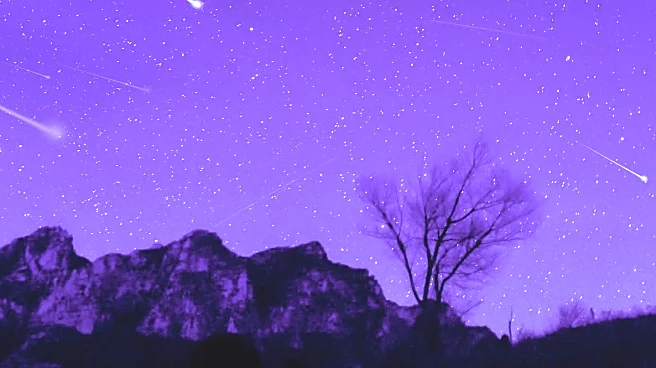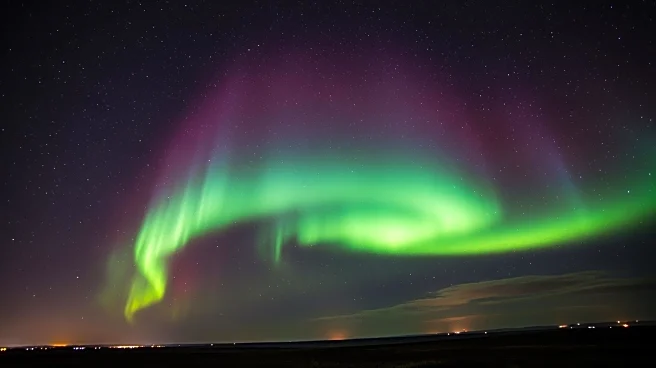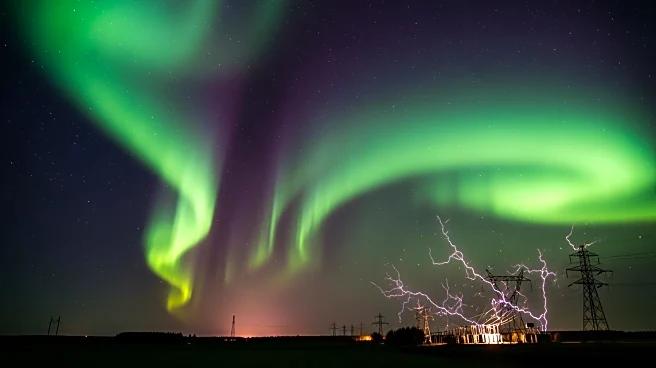What's Happening?
The Leonid meteor shower is set to peak this weekend, offering a spectacular display of up to 15 meteors per hour. The event will be visible against a nearly moonless night sky, providing optimal viewing
conditions. The Leonids, originating from the constellation Leo, are known for their speed and bright fireballs. This year's peak coincides with the activity of the Southern and Northern Taurid meteor showers, enhancing the celestial display. The best viewing time is expected to be just after midnight on Sunday into the early dawn of Monday, November 17.
Why It's Important?
Meteor showers like the Leonids offer a unique opportunity for public engagement with astronomy and science. They can inspire interest in celestial events and provide educational opportunities for schools and communities. The Leonids' visibility across the U.S. allows widespread participation, fostering a sense of wonder and appreciation for natural phenomena. Such events can also boost local tourism, as people travel to areas with minimal light pollution to experience the meteor shower.
What's Next?
As the Leonid meteor shower continues until November 30, enthusiasts and astronomers will monitor its activity and share observations. The event may prompt discussions on the origins and characteristics of meteoroids, contributing to scientific understanding. Communities may organize viewing events, encouraging public participation and education. The ongoing activity of the Taurid meteor showers will also be of interest, providing additional opportunities for observation and study.













